Talk about an identity crisis: The Simpson’s Stopper has had more botanical names than almost any other shrub in North America. That, however, has not stopped people from using this tasty member of the Eucalyptus family.
Currently known as Myrcianthes fragrans (mer-see-ANTH-eez FRAY-granz) it has a long fruiting season and can be found abundantly now. Also called “twinberry” when fully ripe the sweet fruit taste similar to orange marmalade with just a hint of bitter after taste. As a native it has been increasingly used in landscaping often as a hedge. It is used that way in Lake Mary Fl. next to Panera’s on Lake Mary Blvd. It is also a very long hedge behind Whole Foods on Sand Lake Road in south Orlando. And at Haulover Canal near the Manatee viewing deck it is used as a small tree.
There are many “stoppers” in the genus including a White Stopper we saw in Bradenton this past weekend at Neal Preserve with foragers Andy Firk and Mycol Stevens. It was in bloom but not fruiting yet. The Simpson’s Stopper has several identifying characteristics. One is that the leaves are very aromatic when crushed. Some think it smells like nutmeg. It also has three different types of leaves: Pointy leaves, leaves with a dimple at the end, and rounded leaves that are neither pointed nor dimpled. The berries also tend to be in pairs. To read more about the Simpson’s Stopper go here.
Can you pig out on a palm tree? You can when it’s a Pindo Palm and we did this past weekend at Venetian Gardens in Leesburg. The park has several palms dropping the deep yellow fruit. As the fruit would just ferment and rot on the ground we did our civic duty and helped clean up the park but clearing away as much fallen fruit as we could. While the ripe fruit is always good the flavor can vary some from tree to tree. At the park there were at least three different tastes varying in sweetness, fruitiness and texture. Last year at the same location I collected about 12 pounds of fruit and made wine from them. The seed oil is edible, too. Also called the Jelly Palm, it is a cold-tolerant palm and in sheltered locations can be found at least as far north as Washington D.C.
Per usual botanists can’t leave well enough alone. The palm has for a long time been know as Butia capitata which means “Spiny Dense Head.” It’s been changed to Butia odorata, which means “Spiny Smelly.” To botanists that’s an improvement. Timothy Broschat, of the University of Florida, gives this advice if you want to grow them: “Pindo palm seeds are notoriously slow and difficult to germinate, but research has shown that simply cracking the stony seed endocarps in a bench vise or commercial nut cracker and planting the 1–3 seeds enclosed therein in a warm, moist environment (95–105°F) can result in excellent germination in as little as 3 months.” You can read more about the Pindo Palm here.
Bunya Bunya get no respect in countries where people have plenty of food. The falling large cones are consider a legal hazard and the trees are often cut down (as they were at the entrance to Bok Tower in Lake Wales. That plant preserve is the last place one would think they would be removed.) In Bradenton this past weekend while foraging with Andy and Mycol (mentioned above) we found a large fruiting Bunya Bunya. I think everyone went home with at least one of the large cones. The bigger the cone the more likely it will have kernels in the shells. It is a bit of work to get the enclosed nuts out of their green husks. As the kernel taste more like chestnuts than pine nuts I prefer to roast them. This also makes the outer shell more brittle and easier to crack. You can read more about the Bunya-Buya here.
Foraging Classes: This week I became a student again on Saturday when I joined Andy and Mycol in Bradenton to visit Neal Preserve and a local park to look at some brackish-tolerant plants and mushroom. We missed the rain. Then Sunday I had a class at Venetian Gardens in Leesburg. We had only one heavy shower. One of the more unusual finds was a patch of Dandelions this time of year. They were growing in the acidic soil and shade of an oak.
Saturday July 29th, Bayshore Live Oak Park, Bayshore Drive. Port Charlotte. 9 a.m. Meet by the parking lot across from Ganyard St.
Saturday August 5th, John Chestnut County Park, 2200 East Lake Road, Palm Harbor, FL 34685. Meet at the trail head of the Peggy Park Nature Walk, pavilion 1 parking lot. 9 a.m.
Sunday, August 6th, Wickham Park: 2500 Parkway Drive, Melbourne, FL 32935-2335. Meet at the “dog park” inside the park. 9 a.m.
To learn more about the classes click here.
You eat a lot of bugs, you just don’t know it. For example: One cactus species is called Opuntia cochenillifera. Cochenillifera in Dead Latin means “cochineal bearing” but is from the Greek word for red, “kokinos.” That’s because the cochineal insect lives off the cochenillifera cactus and others. You might find that almost interesting except you’ve eaten that exact insect or more specifically a product produced from their crushed, little dehydrated bodies: Cochineal dye, also called “Tuna Blood.” Actually, only the female cochineal bug provides the red dye and it takes some 75,000 to make one pound, 155,000 to the kilogram. Sometimes in the wild you will see a Nopales or an Opuntia mottled with white or gray, or even covered with white or gray cotton-like covering. That’s a cochineal condo. The hard part is each of the scale-like insects has to be harvested by hand, when they are around 90-days old. (I wonder if the guys are swept in too? I mean if all they ever harvest are the ladies it must be hard to find a date.)
Until artificial dyes were invented, cochineal dye was the main red dye from fabrics to food. In the 1400s, eleven cities conquered by Montezuma each paid a yearly tribute of 2000 decorated cotton blankets and 40 bags of cochineal dye. During colonial days Mexico had a monopoly on cochineal dye and it was that country’s second largest export after silver. Cochineal went out of favor and flavor when chemical dyes came in but the organic movement and rejection of artificial dyes has brought it back. Cochineal trumps chemicals, as it were unless you’re a vegetarian who have protested is recent incursion into “natural” foods. Some oppose its use because the only religiously approved insect is the locus. If you use a cosmetic — red lip stick for example — or have eaten a product with any of the following ingredients, you have used or bitten the bug as they are all different names for the same insect coloring: Cochineal Extract, Carmine, Crimson Lake (or Lac) Natural Red 4, C.I. 75470, E120, or even “Natural Coloring” when the product is any shade of red, scarlet, purple or orange. Cochineal is also one of the few water-soluble dyes that resist fading. It is used also in slide staining (you remember those pink slide from biology 101 don’t you?) There is a bug in your past, and probably your future.
All of Green Deane’s videos available for free on You Tube. They do have ads on them so every time you watch a Green Deane video I get a quarter of one cent. Four views, one cent. Not exactly a large money-maker but it helps pays for this newsletter. If you want to see the videos without ads and some in slightly better quality you can order the DVD set. It is nine DVDs with 15 videos on each. Many people want their own copy of the videos or they have a slow service and its easier to order then to watch them on-line. They make a good gift for that forager you know. Individual DVDs can also be ordered. You can order them by clicking on the button on the top right of this page or you can go here.
Want to identify a plant? Looking for a foraging reference? Do you have a UFO, an Unidentified Flowering Object you want identified? On the Green Deane Forum we chat about foraging all year. And it’s not just about warm-weather plants or just North American flora. Many nations around the world share common weeds so there’s a lot to talk about. There’s also more than weeds. The reference section has information for foraging around the world. There are also articles on food preservation, and forgotten skills from making bows to fermenting food. One special section is “From the Frightening Mail Bag” where we learn from people’s mistakes. You can join the forum by clicking on the button on the upper right hand side of this page.
This is issue 267
If you would like to donate to Eat The Weeds please click here.


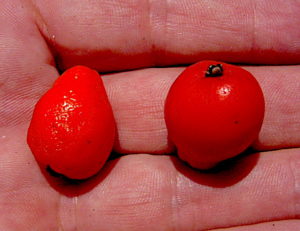
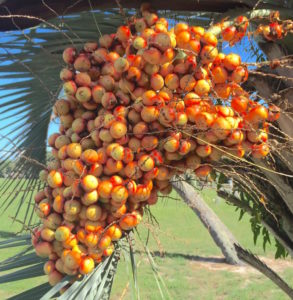
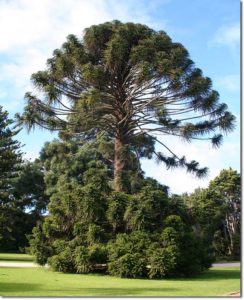
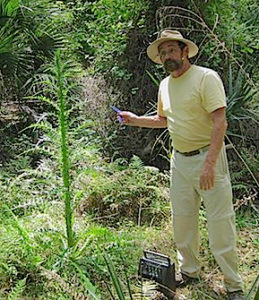
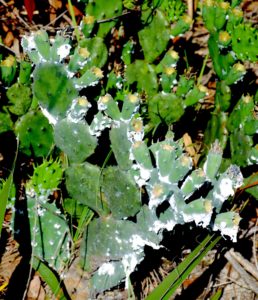
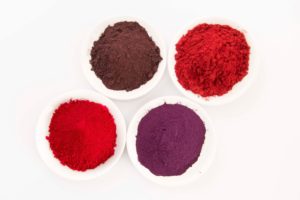



Thanks a lot whenever I go through ” Eattheweeds ” I find enjoyment because of more opportunities will be furnished to let one seek and learn more about the subject matter issued. Thus; on eating bugs, I’m interested to look practically at the cotton material I used to observe after that lovely scarlet red flower of the Calycalium baldinum cactus I keep in a pot as an ornamental plant has faded without fruiting. The experience has been repeated ,including nowadays, for the 4th. year. This time I insisted to look further for the bug responsible for the pigment. I hope also to extend the experiment to obtain the pigment itself. How wonderful to see insects as part of our food.